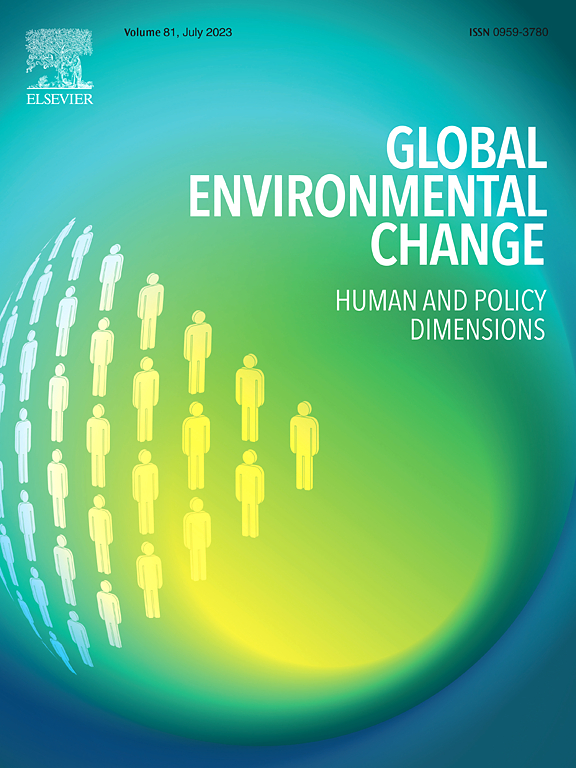Reducing coal use is key to curbing toxic trace elements emissions in China driven by carbon neutrality policy
IF 9.1
1区 环境科学与生态学
Q1 ENVIRONMENTAL SCIENCES
引用次数: 0
Abstract
Toxic trace elements (TEs) are commonly co-emitted with carbon dioxide (CO2) and pose challenges to achieving multiple Sustainable Development Goals (SDGs). However, the extent to which carbon mitigation measures can simultaneously reduce these pollutants remains unclear. Here, we developed an integrated assessment model to evaluate the impact of China’s carbon neutrality policies on TEs emissions from coal combustion across various regions and sectors. Our findings reveal that, compared to baseline scenarios, a 77% carbon reduction under the carbon neutrality policies leads to an 85%-88% decrease in TEs emissions in 2060 within coal-consuming sectors, highlighting the importance of regional and sectoral heterogeneity. We identified key regions and sectors with disproportionately high emission intensities and co-reduction potential. Priority regions include Shanxi, Inner Mongolia, Guizhou, Hubei, and Jiangsu, while critical sectors include petrol oil, power generation, services, chemicals, and metal smelting. We also portrayed, for the first time in literature, an integrated long-term roadmap for synergistic control of CO2 and TEs emissions. These findings provide valuable insights for optimizing multi-pollution reduction strategies and enhancing environmental governance efficacy.

在碳中和政策的推动下,减少煤炭的使用是遏制中国有毒微量元素排放的关键
有毒微量元素(TEs)通常与二氧化碳(CO2)共同排放,对实现多个可持续发展目标(sdg)构成挑战。然而,碳减排措施能在多大程度上同时减少这些污染物仍不清楚。在此,我们开发了一个综合评估模型来评估中国碳中和政策对不同地区和行业煤炭燃烧产生的TEs排放的影响。我们的研究结果表明,与基线情景相比,在碳中和政策下,77%的碳减排将导致2060年煤炭消费部门的TEs排放量减少85%-88%,这凸显了区域和部门异质性的重要性。我们确定了排放强度高、协同减排潜力大的重点地区和行业。重点地区包括山西、内蒙古、贵州、湖北和江苏,关键行业包括汽油、发电、服务、化工和金属冶炼。我们还首次在文献中描绘了协同控制二氧化碳和TEs排放的综合长期路线图。这些研究结果为优化多重污染减排策略、提高环境治理效能提供了有价值的见解。
本文章由计算机程序翻译,如有差异,请以英文原文为准。
求助全文
约1分钟内获得全文
求助全文
来源期刊

Global Environmental Change
环境科学-环境科学
CiteScore
18.20
自引率
2.20%
发文量
146
审稿时长
12 months
期刊介绍:
Global Environmental Change is a prestigious international journal that publishes articles of high quality, both theoretically and empirically rigorous. The journal aims to contribute to the understanding of global environmental change from the perspectives of human and policy dimensions. Specifically, it considers global environmental change as the result of processes occurring at the local level, but with wide-ranging impacts on various spatial, temporal, and socio-political scales.
In terms of content, the journal seeks articles with a strong social science component. This includes research that examines the societal drivers and consequences of environmental change, as well as social and policy processes that aim to address these challenges. While the journal covers a broad range of topics, including biodiversity and ecosystem services, climate, coasts, food systems, land use and land cover, oceans, urban areas, and water resources, it also welcomes contributions that investigate the drivers, consequences, and management of other areas affected by environmental change.
Overall, Global Environmental Change encourages research that deepens our understanding of the complex interactions between human activities and the environment, with the goal of informing policy and decision-making.
 求助内容:
求助内容: 应助结果提醒方式:
应助结果提醒方式:


